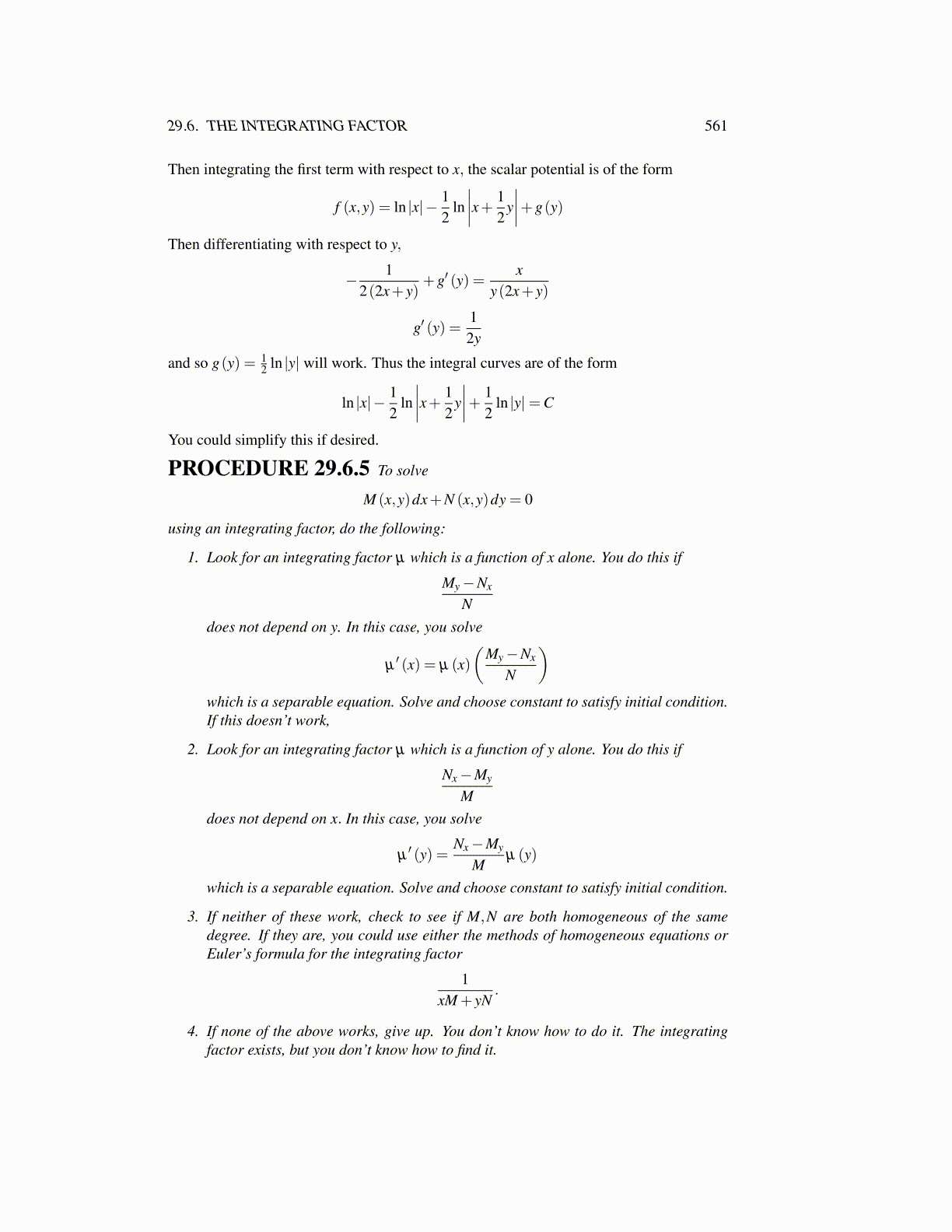
29.6. THE INTEGRATING FACTOR 561
Then integrating the first term with respect to x, the scalar potential is of the form
f (x,y) = ln |x|− 12
ln∣∣∣∣x+ 1
2y∣∣∣∣+g(y)
Then differentiating with respect to y,
− 12(2x+ y)
+g′ (y) =x
y(2x+ y)
g′ (y) =12y
and so g(y) = 12 ln |y| will work. Thus the integral curves are of the form
ln |x|− 12
ln∣∣∣∣x+ 1
2y∣∣∣∣+ 1
2ln |y|=C
You could simplify this if desired.
PROCEDURE 29.6.5 To solve
M (x,y)dx+N (x,y)dy = 0
using an integrating factor, do the following:
1. Look for an integrating factor µ which is a function of x alone. You do this if
My−Nx
Ndoes not depend on y. In this case, you solve
µ′ (x) = µ (x)
(My−Nx
N
)which is a separable equation. Solve and choose constant to satisfy initial condition.If this doesn’t work,
2. Look for an integrating factor µ which is a function of y alone. You do this if
Nx−My
Mdoes not depend on x. In this case, you solve
µ′ (y) =
Nx−My
Mµ (y)
which is a separable equation. Solve and choose constant to satisfy initial condition.
3. If neither of these work, check to see if M,N are both homogeneous of the samedegree. If they are, you could use either the methods of homogeneous equations orEuler’s formula for the integrating factor
1xM+ yN
.
4. If none of the above works, give up. You don’t know how to do it. The integratingfactor exists, but you don’t know how to find it.